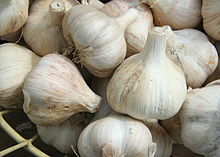 Happy new year, everyone! My name is Emma Davis, and as one of the Food Program’s new coordinators, I’ll be organizing the Garlic Co-op from now on. I’ll do my best to follow in Janice’s very big shoes.
Happy new year, everyone! My name is Emma Davis, and as one of the Food Program’s new coordinators, I’ll be organizing the Garlic Co-op from now on. I’ll do my best to follow in Janice’s very big shoes.
What is it?
The Garlic Co-op is a group of garlic enthusiasts who collectively grow a few varieties of organic premium garlic, with scapes, in a large, shared, sunny plot at the end of Morgan Road, at the south end of the island. We meet about once a month for work parties. Together we learn about this easy-to-grow, hardy crop, share the load of bed-preparation, seeding, weeding, mulching and harvesting, and enjoy some delicious garlic. We also explore various soil-building and composting techniques.
Membership
Annual membership is $30, which covers the cost of our seed and soil amendments. Each member gets garlic to take home; your participation level determines the size of your share of the harvest. A portion of the crop goes towards Food Program community meals as well as the food bank.
How do I join?
To get involved, send an email to galianofoodprograms@gmail.com, call 539.3389, or just show up at the next work party. No previous experience required.
Next work party
February 7, 10:30am.
We’ll be adding organic matter to the beds, so please bring any material you can contribute—seaweed, compost, nettle stalks, leaves, compost tea, ash, lime, manures, grass clippings, cardboard, newspaper, etc. are all welcome!
Please bring gloves and forks if possible.
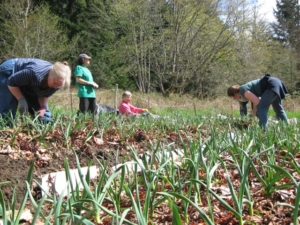 Want to learn to grow garlic? The Garlic Co-op is a great way to get started. We’re a friendly group who grow organic hard neck, with scapes, at a sunny southend site. Monthly work parties are approximately 1.5 hours. Membership is $30, to cover seed and amendment costs.
Want to learn to grow garlic? The Garlic Co-op is a great way to get started. We’re a friendly group who grow organic hard neck, with scapes, at a sunny southend site. Monthly work parties are approximately 1.5 hours. Membership is $30, to cover seed and amendment costs.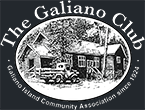
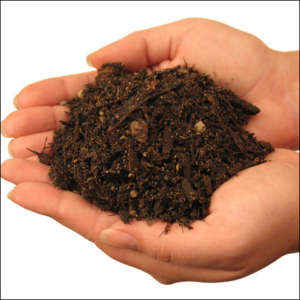 The Food Program will hold a Soil and Compost Workshop on Sunday, May 11th from 10:30am-12:30. Barry New and Roger Pettit will lead a discussion and demonstrations about the soils we encounter on Galiano.
The Food Program will hold a Soil and Compost Workshop on Sunday, May 11th from 10:30am-12:30. Barry New and Roger Pettit will lead a discussion and demonstrations about the soils we encounter on Galiano.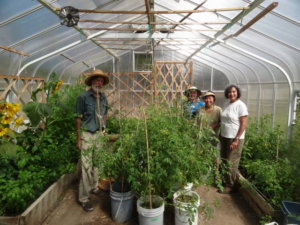 For the spring of 2014 we will begin on Saturday, March 1st, which isn’t all that far away. Everything grew really well last year and we harvested many varieties of tomatoes, basil, cucumbers, eggplant, peppers and more. Cantaloupes worked very well too. Last year we tried early carrots, pakchoi and peas before the main summer crops; something we should try again. We also grew artichokes at the greenhouse for planting at the Garlic Co-op site.
For the spring of 2014 we will begin on Saturday, March 1st, which isn’t all that far away. Everything grew really well last year and we harvested many varieties of tomatoes, basil, cucumbers, eggplant, peppers and more. Cantaloupes worked very well too. Last year we tried early carrots, pakchoi and peas before the main summer crops; something we should try again. We also grew artichokes at the greenhouse for planting at the Garlic Co-op site.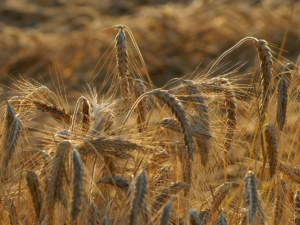 As an experiment, last year I acquired seeds for ten varieties of wheat and four of barley from Salt Spring Seeds and other sources and planted a small test row of each variety in my garden. After initial watering no further water was provided to the growing grain other than rainfall. Germination rates varied among the varieties but all produced grain, which was harvested in late September. In addition to the amount of grain produced, I wanted to see how susceptible the different varieties were to “lodging”, i.e. falling over in wind or rain due to height and top-heaviness of the seed head. Wheat breeders for many decades have selected for shorter, sturdier plants, and more recently for hull-less and bristle-less seed heads to make threshing easier.
As an experiment, last year I acquired seeds for ten varieties of wheat and four of barley from Salt Spring Seeds and other sources and planted a small test row of each variety in my garden. After initial watering no further water was provided to the growing grain other than rainfall. Germination rates varied among the varieties but all produced grain, which was harvested in late September. In addition to the amount of grain produced, I wanted to see how susceptible the different varieties were to “lodging”, i.e. falling over in wind or rain due to height and top-heaviness of the seed head. Wheat breeders for many decades have selected for shorter, sturdier plants, and more recently for hull-less and bristle-less seed heads to make threshing easier.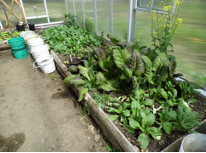 Sunday May 5th from 10 to 12am.
Sunday May 5th from 10 to 12am.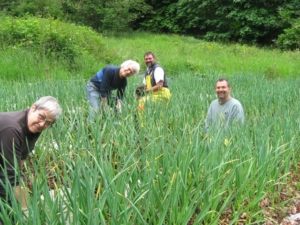 Sunday’s work party went very well – we weeded, made squash mounds, sprayed compost tea, and covered paths and borders with cardboard. The garlic looks great, the phacelia is doing well, and we’re keeping our fingers crossed for the rye.
Sunday’s work party went very well – we weeded, made squash mounds, sprayed compost tea, and covered paths and borders with cardboard. The garlic looks great, the phacelia is doing well, and we’re keeping our fingers crossed for the rye.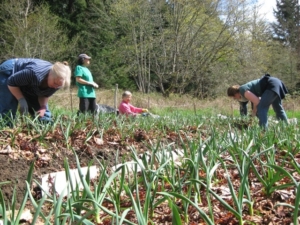 Our next work party is next Sunday, April 14, at 10:30am.
Our next work party is next Sunday, April 14, at 10:30am.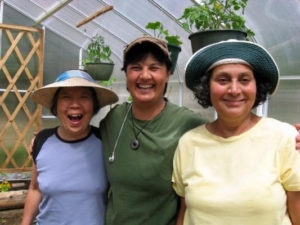 Everyone is welcome to jump-start the Gardening year in the community greenhouse.
Everyone is welcome to jump-start the Gardening year in the community greenhouse.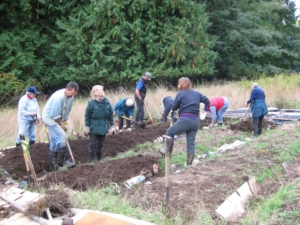 We’ll be sowing the fallow bed in rye and phacelia as cover crops. We’ll also be amending the soil, so please bring any organic material you can contribute: seaweed, compost, nettle stalks, leaves, compost tea, ash, lime, manures, grass clippings, cardboard, newspaper, etc. are all welcome!
We’ll be sowing the fallow bed in rye and phacelia as cover crops. We’ll also be amending the soil, so please bring any organic material you can contribute: seaweed, compost, nettle stalks, leaves, compost tea, ash, lime, manures, grass clippings, cardboard, newspaper, etc. are all welcome! Happy new year, everyone! My name is Emma Davis, and as one of the Food Program’s new coordinators, I’ll be organizing the Garlic Co-op from now on. I’ll do my best to follow in Janice’s very big shoes.
Happy new year, everyone! My name is Emma Davis, and as one of the Food Program’s new coordinators, I’ll be organizing the Garlic Co-op from now on. I’ll do my best to follow in Janice’s very big shoes.